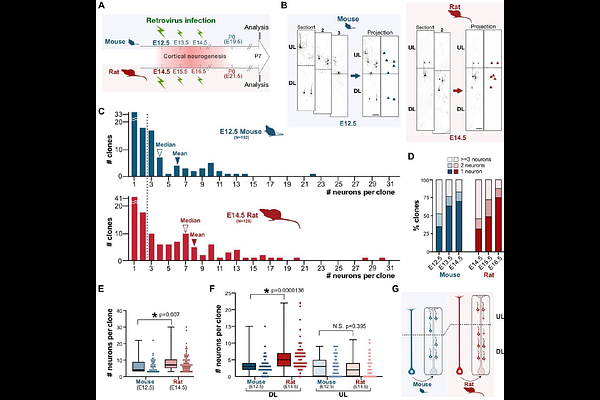Non-uniform temporal scaling of neurogenesis for species-specific dosing of cortical excitatory subtypes

Non-uniform temporal scaling of neurogenesis for species-specific dosing of cortical excitatory subtypes
Yamauchi, Y.; Zhou, X. D.; Tarfder, R.; Rouillard, P.; Bilgic, M.; Deguchi, S.; Nakamura, T.; Kishi, Y.; Emoto, K.; Suzuki, I. K.
AbstractMammals share a laminar cerebral cortex, with excitatory neuron subtypes organized in distinct tangential layers. Although this framework is conserved, subtype balance varies markedly between species due to unknown mechanisms. This study shows that non-uniform scaling of temporal neurogenetic dynamics shapes species-specific neuronal composition. Comparing mice and rats, we show that rats produce more deep layer (DL) neurons but similar numbers of upper layer (UL) neurons. This difference results from a specific extension of early neurogenetic phase for DL production before transitioning to UL production in rats, as confirmed by birthdating and single-cell transcriptomics. The duration of DL production is regulated by a genetic program controlling progenitor aging, including Ccnd1. Knocking down Ccnd1 in rat progenitors induces a precocious shift to UL production, mirroring the mouse pattern. Thus, while sequential cortical neurogenesis is conserved, its progression is non-uniformly scaled in each species. Such precise heterochronic fine-tuning allows evolutionary refinement of cellular configuration without drastic remodeling of the conserved corticogenesis program.